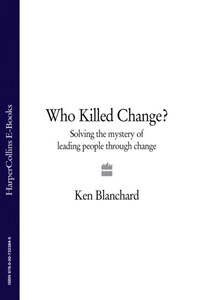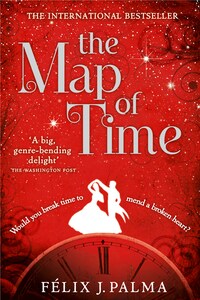AGENT Mike McNally’s dark sedan skidded up to the front door of the ACME organization under a stormy night sky. The single blue light rotating on the hood contrasted eerily with the distant flashes of lightning. McNally got out of his car, brushed the ashes from his overcoat and took a last drag on his cheap cigar.
This was his third homicide case this month, all with the same last name—Change. In fact, the investigation of Change fatalities had become his life’s work. A clear pattern to the deaths had emerged over the years. Change would be introduced to an organization with varying degrees of reception. From all appearances Change would begin to integrate into the organization and then, without warning, Change would be found dead, quite often with no apparent injury. The evidence was always scant and a sole perpetrator had never been identified.
This time McNally was determined to catch the killer. He extinguished his cigar, took his notebook from his pocket and slowly walked toward the door.
McNally slipped under the yellow Do Not Cross police tape and walked into the conference room. The room buzzed with activity. A photographer was taking pictures of the deceased from different angles, and people in groups of two and three were giving their opinions on what had happened. At the far end of the room, Change’s body was slumped over the conference table. Just out of reach of his right hand was an overturned glass. The table was still wet from the spill.
A man unknown to McNally came up to him and handed him a folded note. “The medical examiner asked me to give this to you,” he said.
McNally unfolded the note and read:
probably a homicide
poisoning is the most likely cause of death
death was most likely between 7 and 9 a.m. today
more after the autopsy
McNally cleared the room, closed the door and began his investigation of the crime scene. When he emerged an hour later, a woman was waiting for him outside the door.
“My name is Anna,” she said. “I’ll be your assistant. I’ve been told to take care of whatever you need.”
McNally knew who the primary suspects were. He had done this many times before. The usual suspects were always the same. He opened his notebook and looked at the list he’d prepared:
1 Culture—defines the predominant attitudes, beliefs and behavior patterns that characterize the organization
2 Commitment—builds a person’s motivation and confidence to engage in the new behaviors required by the Change
3 Sponsorship—a senior leader who has the formal authority to deploy resources (e.g., time, money and people) toward the initiation, implementation and sustainability of the Change; ultimately responsible for the success of the Change
4 Change Leadership Team—actively leads the Change into the organization by speaking with one voice and resolving the concerns of those being asked to change
5 Communication—creates opportunities for dialogue with change leaders and those being asked to change
6 Urgency—explains why the Change is needed and how quickly people must change the way they work
7 Vision—paints a clear and compelling picture of the future after Change has been integrated successfully
8 Plan—clarifies the priority of the Change relative to other initiatives and responsibilities; works with those being asked to change to develop a detailed and realistic implementation plan, then to define and build the infrastructure needed to support the Change
9 Budget—analyzes proposed Changes from a financial perspective to determine how best to allocate limited resources and ensure a healthy return on investment (ROI)
10 Trainer—provides learning experiences to ensure those being asked to change have the skills needed to follow through with the Change and succeed in the future organization














